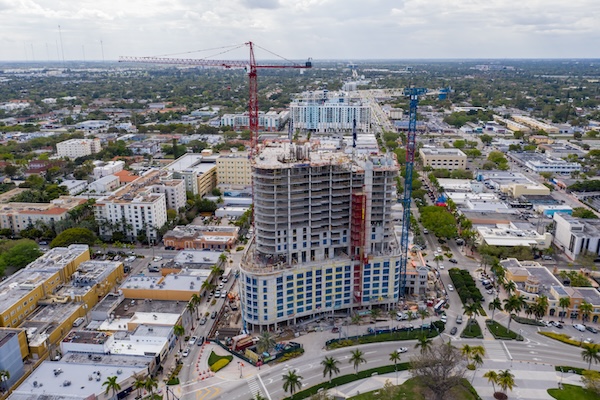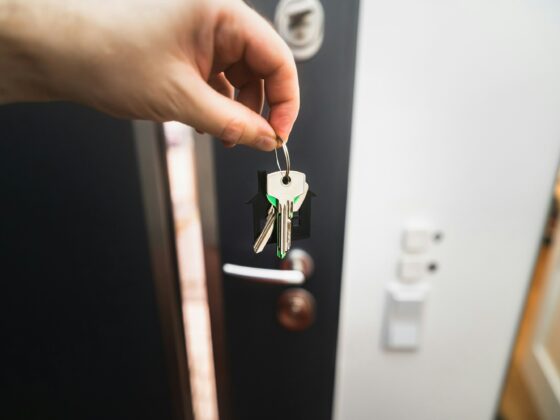
The “American Dream” is a trope often portrayed in films and in books—pull yourself up by the bootstraps and you, too, can have the accoutrements of the good life. The American Dream stretches beyond U.S. borders, enticing those oversea to jettison their native country to pursue it. Like attaining the American Dream, it isn’t easy.
One of the ways to get started has traditionally been through the H-1B visa program, which allows U.S. employers to hire foreign workers in specialty occupations where a bachelor’s degree (or equivalent) is required.
But in today’s immigration crucible, the H-1B is under fire, forcing some to look for an alternative to U.S. residence
Established by the Immigration Act of 1990, the program’s initial goal was to address shortages in fields including technology, engineering and science. The visa’s duration is typically six years and, as an added bonus, holders of the visa can bring with them immediate family members. The program is capped at 65,000 new visas each year, although an additional 20,000 can be issued for employees with a master’s degree or higher, according to the U.S. Citizenship and Immigration Services.
Some of the smartest minds are outside the U.S.; it’s no surprise, then, that companies at the vanguard of technology and AI, from Nvidia to OpenAI, are dependent on the program. According to Business Insider, Nvidia, a company with 36,000 global employees, filed for 1,519 H-1B work visas in 2025. They aren’t the only one, by a long shot. The National Foundation for American Policy notes that Amazon led the way in H-1B petitions approved in fiscal-year 2024 at 3,871.
Tesla had 742 petition and in 2024, its billionaire CEO Elon Musk took to his social media platform X posting: “The reason I’m in America along with so many critical people who built SpaceX, Tesla and hundreds of other companies that made America strong is because of H1B.” He then dropped an explicative, adding “I will go to war on this issue the likes of which you cannot possibly comprehend.”
Going to battle with Musk is something Scott Bessent might know, but recently the H-1B visa has come under fire from on-again-off-again Musk confidante, President Donald Trump. Much of the president’s agenda has been focused on cracking down on illegal immigrants with less attention paid to employment-based visas. (At the same time, there has been a crackdown on foreign students. More than 1,000 international students have had their visas or legal status revoked in recent months, according to the Associated Press.)
What used to be a Silicon Valley issue is now a national concern. Across the country, companies on the frontier of AI are desperate for skilled engineers, researchers and developers. The H-1B visa is a prime example of dysfunction. With only 85,000 new H-1Bs issued annually, in FY2025 more than 343,000 eligible H-1B applications were submitted, demonstrating how wildly oversubscribed the program is. The selection process, a random lottery, leaves companies like Amazon and Microsoft dependent on chance rather than merit. Consider this: A world-class AI researcher with a PhD from MIT could lose out to a less qualified candidate simply due to the algorithm’s randomness. This makes workforce planning difficult and drives top-tier global talent away.
Turning to an Alternative
As the H-1B program gathers further scrutiny and time-suck challenges, one workaround some professionals use is the EB-5 Immigrant Investor Program, which offers green cards in exchange for investments of $800,000 in job-creating U.S. businesses. It’s also been a driving force in hotel development, fueling billions of dollars in foreign direct investment each year.
While limited to 10,000 visas per year (far fewer than H-1B), EB-5 has become an option for frustrated high-skilled immigrants, including those in AI and tech.
Trevor Anderson heads the EB-5 program for HomeFed Corporation, one of the nation’s largest real estate developers. He says that there has been a distinct recent trend of current H-1B visa holders and student visa holders turning to EB-5 for a more permanent solution. “It’s about keeping their American Dream alive,” he said.
EB-5 is not the cheapest option, but it’s the surest alternative for those looking to secure their future and the future of their children. “They don’t want to put their fate in the hands of chance,” Anderson said.
The pivot to EB-5 is something Joey Barnett, a partner at Wolfsdorf Rosenthal and member of the firm’s EB-5 and business immigration practices, has been tuned to. “I’ve seen the impact of this system firsthand,” he said. “Many of our clients come from high-demand fields, including AI and engineering. Frustrated by the green card backlog, they turn to EB-5 as a more reliable alternative.”
EB-5 might be a pricey option but leaving it to providence is not an option. On the plus-side, many in the tech field are sitting on piles of cash or come from families with the means to take advantage of the EB-5 program. “They are willing to invest $800,000 or more in job-creating U.S. enterprises not only because they believe in the American Dream, but because it’s often the only viable path to permanent residency,” Barnett said.
Andres Echevarria knows a thing or two about the sometimes laborious and notorious byzantine visa process. He specializes in EB-5 as the chairman of the law firm Vivanco & Vivanco and refers to the H-1B as “a fantastic visa,” but one that now has come up against what he calls “serious limitations,” including the six-year run-out period, the need of employer sponsorship and it being tied to chance and not merit.
“When the H-1B reaches a dead end, many people look to transition into a green card, but employer-sponsored green cards are often a tough sell—expensive, time-consuming and they require detailed public disclosures from the employer,” Echevarria said. “That’s where EB-5 comes in as an appealing alternative. It gives control back to the applicant.”
Now, under new EB-5 rules, H-1B holders can apply to adjust their status without having to leave the U.S., which is a major change. “Historically, this was not possible,” Echevarria said.
Another benefit accorded to EB-5 is that it more broadly accommodates family members of the holder. Under the H1-B, family members are required to have a H-4 visa, which allows them to live in the U.S., but not work. “That can be a dealbreaker for many families,” Echevarria said. By contrast, EB-5 provides full benefits to the entire family, allowing spouses and children under 21 to not only live, but work and study freely.
The sheer cost of EB-5 limits its use. Though EB-5 provides a temporary relief valve, it is not a scalable solution for the vast number of talented professionals who want to live and work in the U.S. But in the age of AI, can we really afford to turn our backs on the most talented? To remain a global leader in AI, the U.S. must align immigration policy with economic needs. This includes raising or eliminating the H-1B cap; removing per-country limits on green cards; and creating reliable, fast-track pathways to permanent residency for top global talent.
One of the chief gripes around H-1B is that it takes away jobs from Americans, the argument being that the visa allows companies to replace American workers, especially in tech, with foreign workers willing to accept lower wages. The counter is that H-1B workers are not displacing American workers, only complementing the U.S. workforce and filling specific roles.
Concerns about job competition and wage suppression can be addressed through safeguards and data-driven policy. The bigger risk is inertia: If the U.S. doesn’t act, countries like Canada, the UK, and Singapore will continue to capitalize on America’s immigration gridlock.
This is a rare moment to fix a structural issue holding back innovation. With key voices like Elon Musk advocating for reform and President Trump weighing an immigration overhaul, now is the time for action.
If America wants to lead in the AI era, it must welcome the people who power it.





